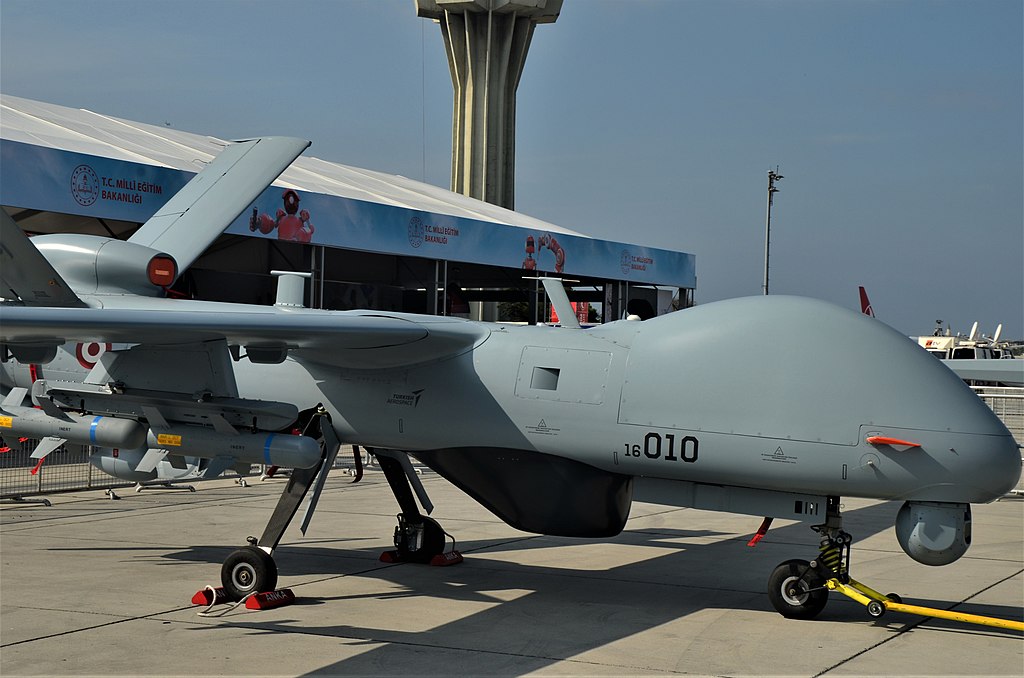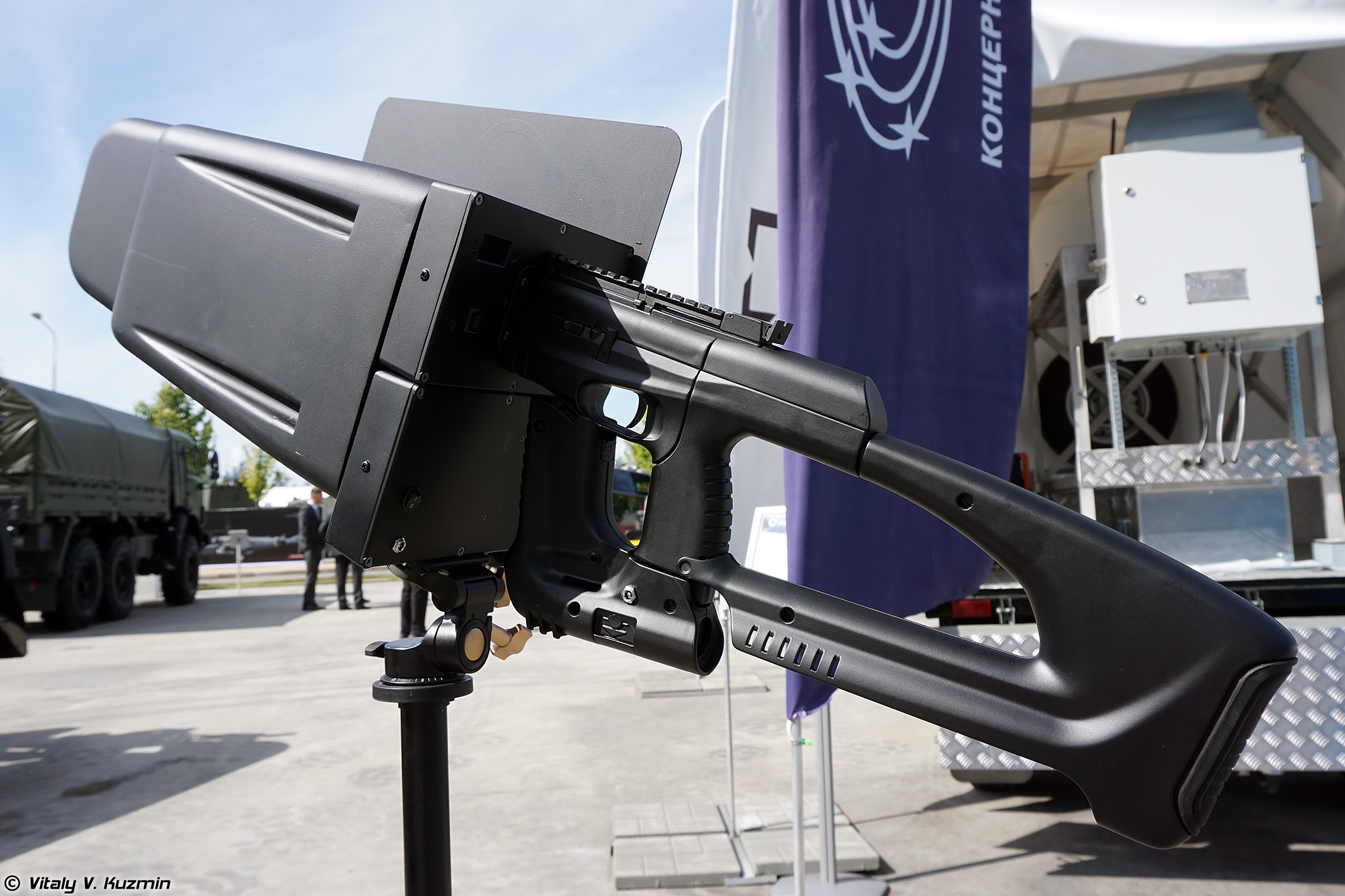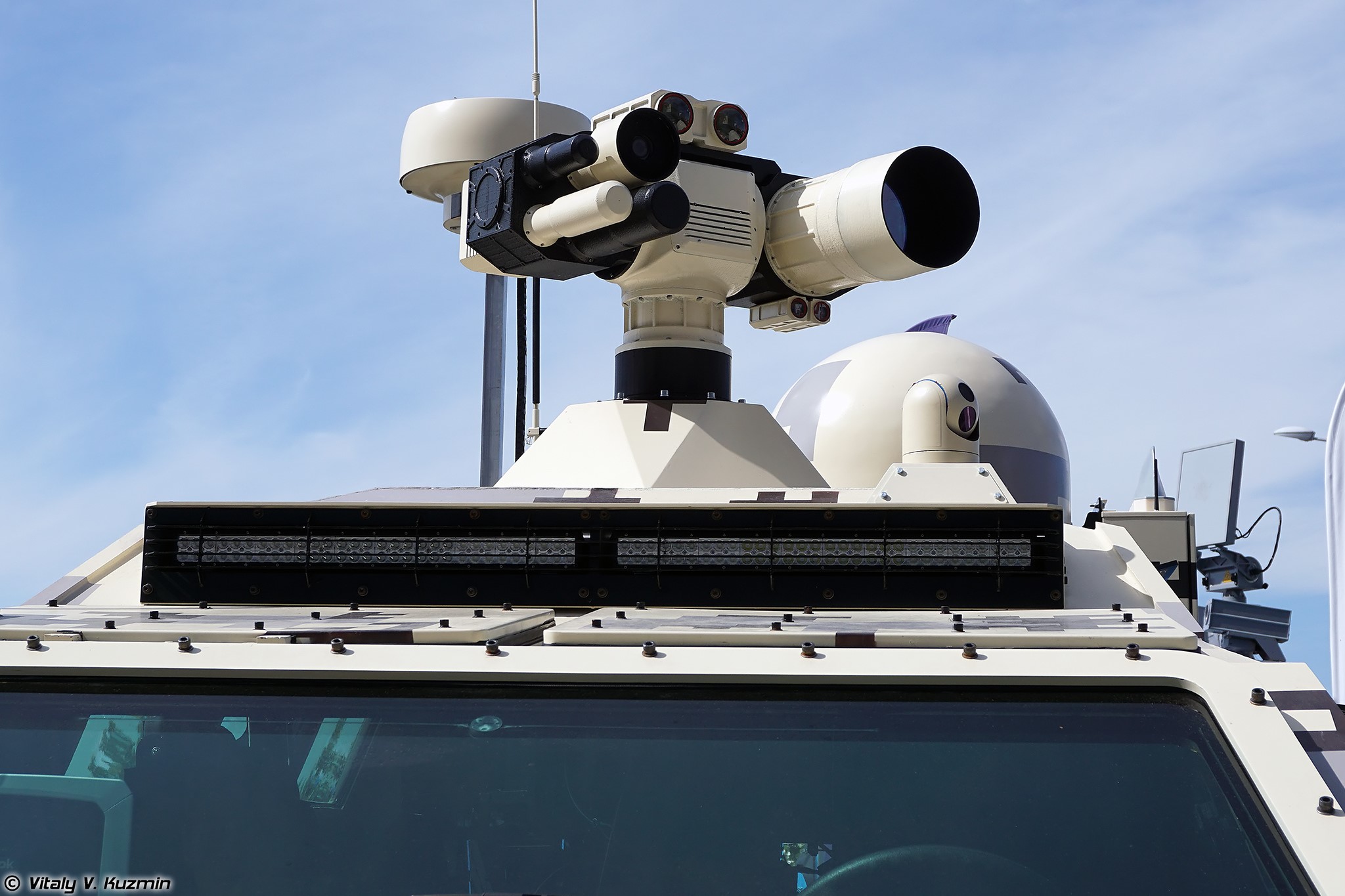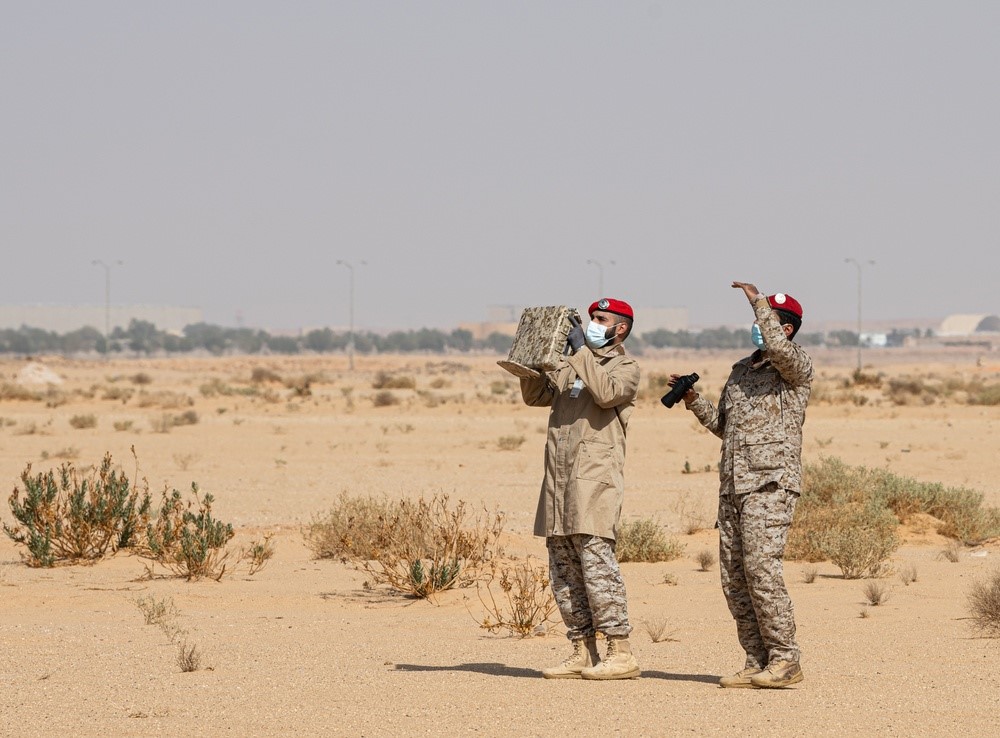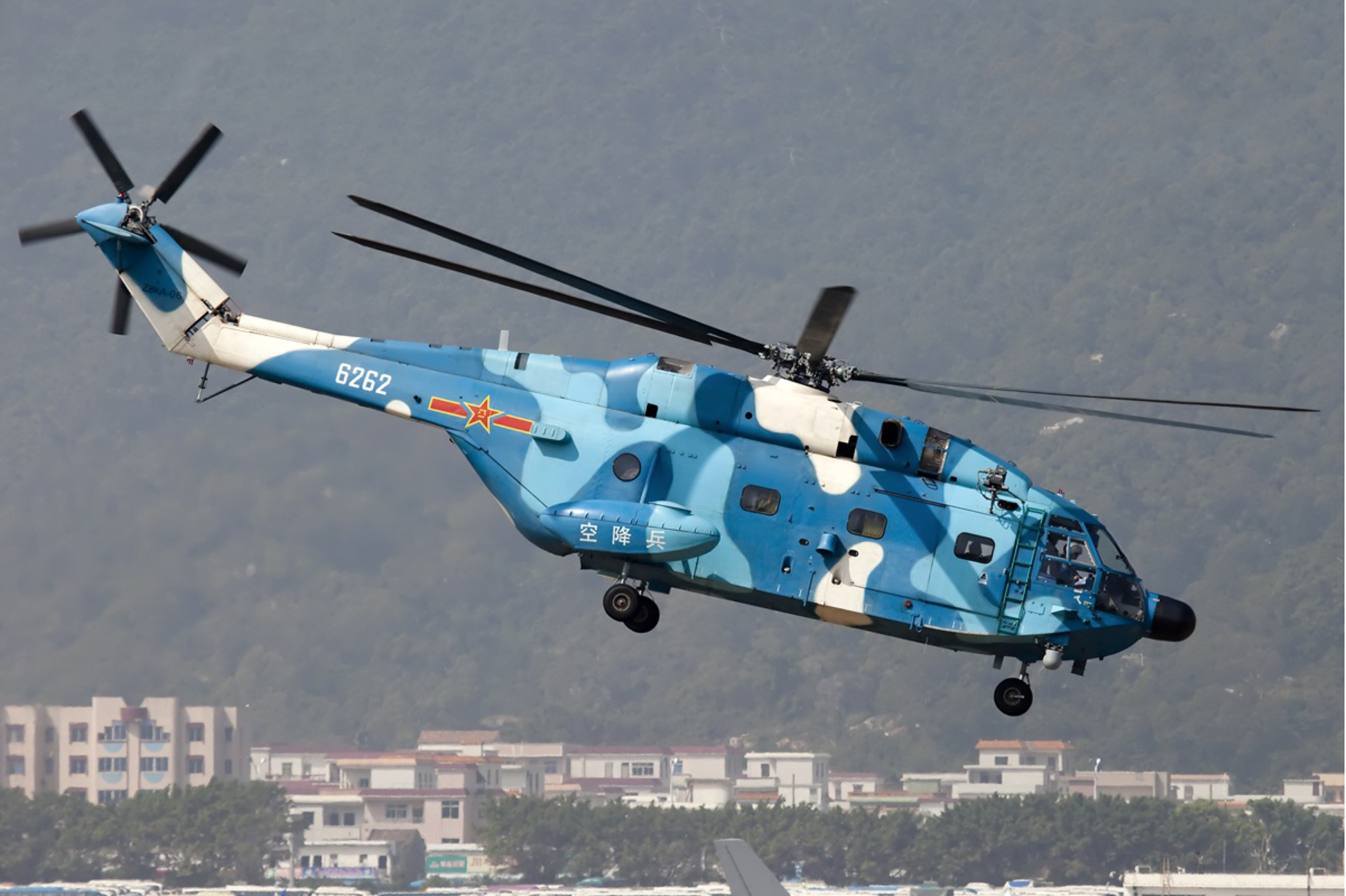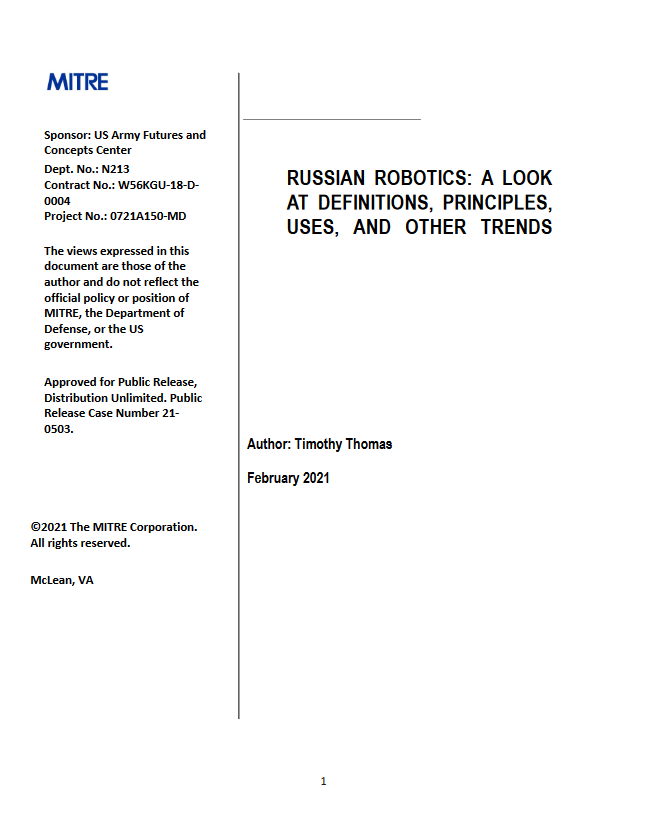Pischal Counter-UAV Gun.
Ratt Anti-UAV System (exterior view).
Ratt Anti-UAV System (interior view).
“Many Russian electronic warfare manufacturers are now developing portable counter-UAV devices, mindful of the requirement for small military teams to be protected against the drone threat from the air. Most of them, like the Pishchal, are in the form of a firearm, which is convenient and what troops are used to.”
There is a consensus in Russian circles of military thought that the ability to counter unmanned aerial vehicles (UAVs) could be decisive in future conflicts. The excerpted articles from Russian Armed Forces monthly journal Armeyskiy Sbornik and pro-Kremlin daily newspaper Izvestiya discuss Russia’s development of counter-UAV technologies. Armeyskiy Sbornik describes the theory underpinning Russia’s tactics for countering UAVs. Russia intends to use both kinetic fires, such as the guns and missiles of air defense systems, and electronic warfare (EW), such as jamming, to counter UAVs. The article also mentions some of the unique technologies that Russia has developed to further this effort, such as the Pischal counter-UAV gun. According to military and defense industry weekly Voyenno-Promyshlennyy Kuryer, during the recent Nagorno-Karabakh conflict, EW caused approximately 15 UAVs to land, or fly-off course. The article posits that these EW means and conventional air defense systems could defeat Ukraine’s Turkish-made Bayraktar UAVs. The article from Izvestiya explains how Russia’s theory of kinetic air defense in conjunction with effective EW is not just theory, and Russia is already implementing it in training.
Source:
Colonel M. Mitrofanov, Lieutenant Colonel D. Vasyukov, and Major V. Anisimov, “Практические Рекомендации Защита Элементов Системы Связи От Беспилотных Летательных Аппаратов (Practical Recommendations for Protecting Elements of a Communication System Against Drones),” Armeyskiy Sbornik (monthly journal of the Russian Armed Forces military and defense industry weekly Voyenno-Promyshlennyy Kuryer), September 2021. https://army.ric.mil.ru/Stati/item/343042/
Drones are becoming an increasingly common element of modern military operations and are now accessible not only to regular but also to irregular armed forces and also to terrorist organizations…Experience of countering drones during local conflicts across the world has shown that when they are airborne their data transmission channels are visible to signals intelligence and vulnerable to electronic jamming. The data transmission channels include:
— the operator’s control channel to the drone
— the drone’s channel for transmitting data to its control station
— the satellite navigation channel
Countering drones does not necessarily mean their physical destruction. Electronic jamming can be used to disable a drone’s data transmission channel, also the channel for controlling it. Apart from disabling the control and data channels, you also need to disable the channel that receives the satellite navigation signals. Satellite data is used not only to plot the drone’s route but also by weapons for target acquisition…Russian electronic warfare developers are actively working on ways of countering drones. For example, at the Dubai Airshow in 2019 the Rosoboronexport corporation displayed the design of a layered defense system that included Russia’s latest counterdrone technologies, such as the Repellent-1, Sapsan Bekas, Kupol, Rubezh Avtomatika, Luch, and Pishchal…
Particular attention is also being paid to portable devices for fighting drones. For example, the Luch and Pishchal systems, which can emit electromagnetic signals to disable drones 6 and 2 km away respectively, were displayed for the first time at the Dubai Air Show in 2019. The Pishchal weighs just 3.5 kg and is one of the lightest counter-UAV devices of its class on the market today, so it can form part of a soldier’s personal kit (figure 8).
Many Russian electronic warfare manufacturers are now developing portable counter-UAV devices, mindful of the requirement for small military teams to be protected against the drone threat from the air. Most of them, like the Pishchal, are in the form of a firearm, which is convenient and what troops are used to. They comprise modules for detecting a drone’s radio signals and creating the jamming to disable the control and navigation channels. Among these devices is the “Personal Drone Countermeasures Complex” made by the Special Technology Center company (reference 8), which can disable drone control channels from at least 2 km away and radio navigation channels from at least 10 km. Or the Rex 1 and Rex 2 portable counter-UAV systems made by the company Zala Group Unmanned Systems (reference 9), which also work against drone control and navigation channels. And these are by no means all the developments of our defense sector when it comes to fighting drones.
So, at the present time, we know of the following ways of countering drones.
1. Destroy them using air defense or other fire assets.
2. Destroy their control stations.
3. Capture them (with nets or by intercepting their control channels).
4. Use electro-optical countermeasures (advanced directed-output laser weapons).
5. Electronically jam their control channels, reconnaissance data transmission channels, or their geopositioning systems.
6. Distort the navigation coordinates in the vicinity of a protected site.
7. Conceal protected sites.
8. Create dummy protected sites (deception).
Source: Oleg Falichev, “«Байрактаров»: У России есть все необходимое для приземления турецких беспилотников (Snares for Bayraktar: Russia Has All Necessary Equipment to Force Turkish Drones to Land),” Voyenno-Promyshlennyy Kuryer (Russian weekly focusing on the military and defense industry), 1 November 2021. https://vpk-news.ru/articles/64483
The situation in eastern Ukraine has escalated once again. The Ukrainian Armed Forces subunits occupied the village of Staromarivka in the so-called gray zone, where 180 residents ended up hostages; about 40 of them own Russian passports. Trains with tanks and artillery arrive at the closest railway station. One of them had been spotted near Slovyansk, the second one — near Svyate. Positions of Donetsk militia are bombed by Turkish-made Bayraktar UAVs. The situation is again on the verge of a full-scale war…So what should Russia do? It cannot be ruled out that Russia might hold new large-scale military exercises next to the borders with Ukraine to rehearse action against external threats, as was observed at the beginning of this year when, according to Western data, a Russian army numbering about 100,000-120,000 personnel was deployed in the vicinity of the Ukrainian border.
[T]he best option is to create a full-fledged air defense grouping in this area, capable of covering villages and militia without crossing the demarcation line…However, Russia also has other weapons that work without firing…Based on the experience of the war in Nagorno-Karabakh, about 15 UAVs were forced to land or were thrown off course with the aid of electronic warfare equipment…The Pantsir-S1 and Pantsir-SM antiaircraft missile and gun systems are also excellent countermeasures against drones. The range of the latter has been increased to 40 kilometers thanks to the upgraded multifunctional aiming station. The range at which it detects and selects targets is substantially greater, and so is its resistance to jamming. However, this weapon, as they say, may be used in case of emergency. The main thing right now is to establish and secure a resilient system for radar surveillance and monitoring…
Source: Alexey Ramm and Bogdan Stepovoy, “На новый маневр: войска отработали борьбу с беспилотниками в горах: Какую тактику отражения атак дронов опробовали на учениях в Крыму и на Кавказе (To New Maneuver: The Troops Worked Out Combating Unmanned Aerial Vehicles in the Mountains: They Worked Out Which Tactic To Repel Drone Attacks at Exercises in the Crimea and in the Caucasus),” Izvestiya (large-circulation pro-Kremlin daily newspaper), 3 November 2021. https://iz.ru/1244533/aleksei-ramm-bogdan-stepovoi/na-novyi-manevr-voiska-otrabotali-borbu-s-bespilotnikami-v-gorakh
The Ministry of Defense has concluded a series of exercises in the Caucasus and in the Crimea, at which they worked out and studied Russian air defense capabilities to combat unmanned aerial vehicles in mountain conditions. The war in Nagorno-Karabakh showed that drones are becoming especially dangerous during combat on mountain terrain: it is difficult to detect and shoot them down due to the terrain’s relief. They managed to repel a supposed mass attack of unmanned aerial vehicles through the joint operations of the air defense (PVO) and electronic warfare (EW) forces. In the experts’ words, only the cohesive work of all subunits, which are participating in the engagement, can yield success in the mountains…
The Military Department previously reported that a composite detachment for combating UAVs of Southern Military District 49th Combined-Arms Army’s Mountain Motorized Rifle Formation repelled the attacks of the notional enemy’s drones at Kobu-Bashi Range in Karachay-Cherkesia. It consisted of EW and tactical reconnaissance subunits and crews of Tunguska-M1 [SA-19 GRISON] air defense missile-gun systems and Strela-10 [SA-13 GOLPHER] missile systems. During the course of the exercises, the PVO subunits managed to destroy all targets, and the EW complexes confirmed their high effectiveness, having used Zhitel jamming stations to jam the drones’ command and control and navigation channels. More than 500 servicemen participated in the maneuvers…
Even simple UAVs gain many advantages in the mountains, which the defending side needs to mitigate, Military Expert Viktor Murakhovskiy pointed out in a conversation with Izvestiya.
“A drone is not visible for radars and optical systems behind mountain slopes,” he explained. “As a result, the UAVs obtain good chances to conduct a surprise attack and the defending side’s response time is reduced. The Syrian experience has demonstrated that the composite detachments make a good showing on that terrain, which PVO and EW weapons and even snipers with heavy caliber rifles can reach. It is also very important to organize monitoring of the air situation in the mountains…
The Russian Army is prepared to confront the new threat. The PVO system is being improved constantly and new equipment is arriving in the troops. The Military Department has already reported that a new air defense command and control system was employed at the “Zapad-2021” Strategic Exercises. It consisted of all reconnaissance assets and also of air defense systems and complexes, which were involved in the maneuvers. The exercises demonstrated that the new equipment permits the creation of an impenetrable defensive dome over significant territory…
Image Information:
Image: Pischal Counter-UAV Gun.
Source: Vitaly Kuzmin, https://photos.smugmug.com/Military/ARMY-2020-Static-part-3/i-SCHRNzn/0/6a9634f0/X4/Army2020-Static-Part3-090-X4.jpg
Attribution: CC 4.0
Image: Ratt Anti-UAV System (exterior view).
Source: Vitaly Kuzmin, https://photos.smugmug.com/Military/ARMY-2020-Static-part-3/i-N8H53ht/0/f9763ab1/X4/Army2020-Static-Part3-084-X4.jpg
Attribution: CC 4.0
Image: Ratt Anti-UAV System (interior view).
Source: Vitaly Kuzmin, https://photos.smugmug.com/Military/ARMY-2020-Static-part-3/i-dMRnVvJ/0/5487d70d/X4/Army2020-Static-Part3-085-X4.jpg
Attribution: CC 4.0
